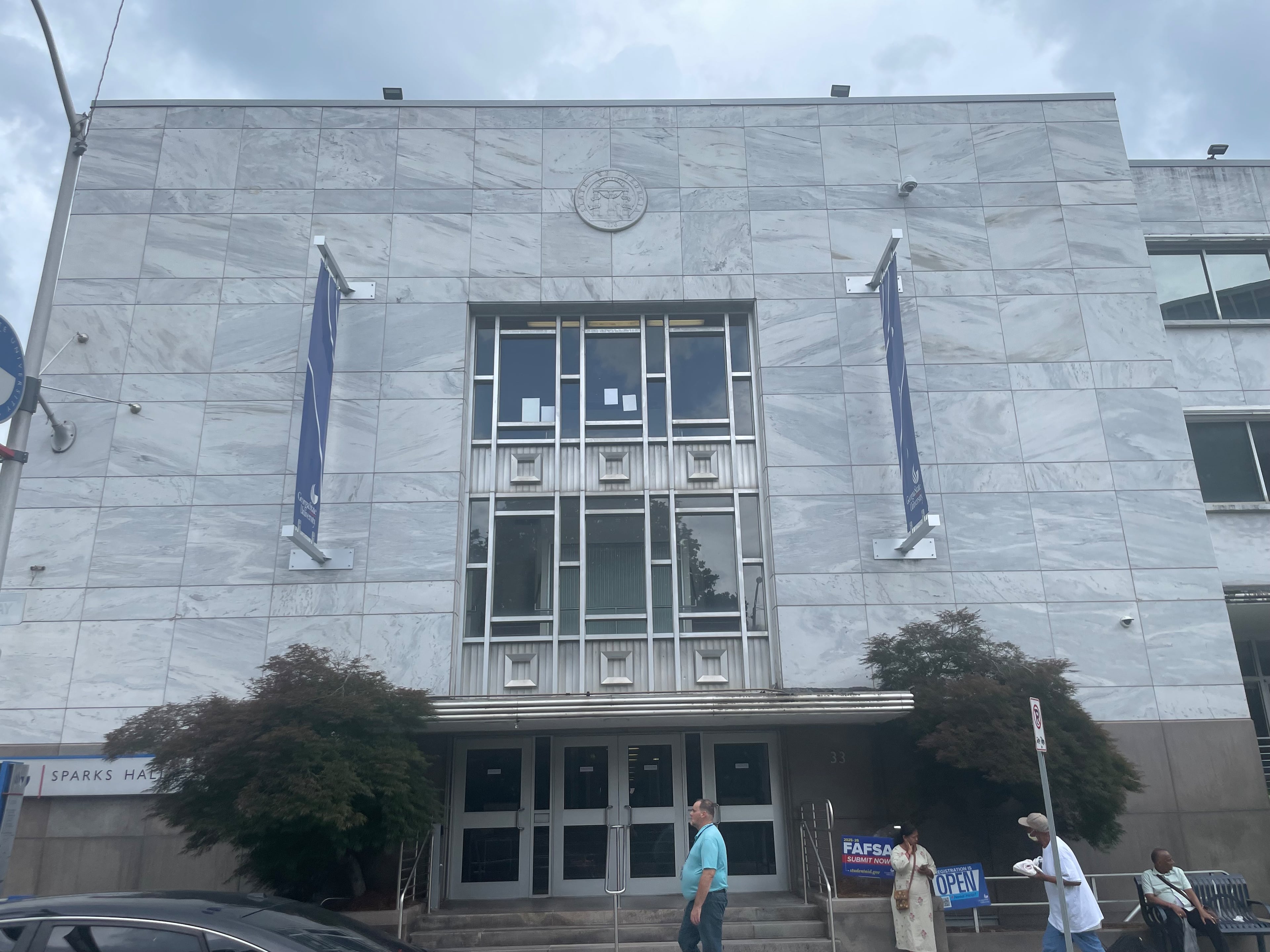50 years after ‘Save the Fox,’ historic preservation still spotty
For historic preservationists, recent events in Atlanta’s development front make it one step forward and two steps back.
This month, the city announced it’s moving to restore that peculiar eyesore that has for a half century rotted in plain sight across the street from Atlanta’s main transit station.
I’m talking about the old Atlanta Constitution building, built in 1947, which was occupied by the scribes for only six years and then turned over to Georgia Power, which abandoned it in the early 1970s. It’s a space that brings greenery downtown, with trees growing from the windows and roofs.
City officials, including Mayor Andre Dickens, stood in front of the Art Moderne-style (the “e” makes it more fancy) building at 143 Alabama St. and said scores of affordable apartment units would be created in the renovation.
On the preservation downside, Georgia State University is plowing ahead with plans to demolish two old structures.
The first is Sparks Hall, the white marble-clad building which was constructed in 1955 and helped put the college on the map. The second slated for the wrecking ball is a fortress-like brick structure at 148 Edgewood Ave., a long-ago power station that once lit up the historic Auburn Avenue area.

Georgia State wants to tear down the two buildings to create greenspace and give the students of the urban campus some room to hang out.
David Yoakley Mitchell, head of the Atlanta Preservation Center, has lobbied GSU, saying the destruction of the Edgewood building “would represent not just the destruction of bricks and mortar, but the erasure of a tangible connection to Atlanta’s heritage and the continuing story of a neighborhood that has played a vital role in our city’s history.”
Likewise, the Georgia Trust for Historic Preservation put the Edgewood property on this year’s “Places in Peril” list, saying it was a “key part of both the local Martin Luther King, Jr. Landmark District and the national Martin Luther King, Jr. Preservation District.”
Wright Mitchell, CEO of the Georgia Trust, (yes, he said, the two preservation execs are distantly related) told me, “This district is extremely important to understanding Atlanta’s history.”
The old powerhouse on Edgewood, built by the Georgia Railway and Power Company, “put the lights on at Ebenezer Baptist (pastored by King’s father, the Rev. Martin Luther King Sr.) In a way, it was the beating heart of the Martin Luther King Jr. Historic District.”

I visited the Georgia State campus this week and talked with students, including Tamia Sams, who studies nursing and works in the Sparks Building.
“I’ll be sad to see it go,” she said, as we talked in the building’s block-long hallway. “It’s bittersweet. I know Georgia State is going to make good changes. But I like (Sparks’) oldness, its history. It’s a comfort spot for me.”
Minutes later, I spoke with GSU exec Jared Abramson who said Sparks’ destruction would create a blocks-long expanse connected to Hurt Park. The park has been restored and there appear to be fewer homeless people, other than one dude yelling at nothing in particular. The idea is to create a there for the sprawling urban campus, a place with no real “there.”
The area would become “Panther Quad,” a “social gathering green space to create this feeling of having a college town downtown” Abramson said.
“This entire plan is putting safety first. We want a place that is vibrant, where you feel comfortable relaxing outside on a blanket without looking over your shoulder in fear of getting harmed of harassed or hassled.”
“Perceptions of safety” and “actual experiences” on campus, Abramson said, have caused some students to leave and others to not show up once accepted.
(While walking on campus, I saw a group of students in Hurt Park getting indoctrinated by a tour guide in a Georgia State T-shirt.)

The Edgewood building would become a “pocket park” next to a row of fraternity and sorority houses. He said renovating the old 9,000-square-foot structure, which largely sits empty, would cost $12 million and, “The juice isn’t worth the squeeze.”
I asked Abramson about contentions from preservationists that GSU is turning a blind eye to history, including MLK’s.
He said GSU has “adapted” more than 20 existing buildings.
“We graduate more Black students than any other not-for-profit university in the country, including HBCUs,” he said. “We break down divides.”
David Mitchell, the Preservation Center’s guy, noted this month marks the 50th anniversary of saving the Fox Theatre.
Back in the 1970s, telephone giant Southern Bell wanted to knock down the Fox to erect its massive headquarters. The citizenry of Atlanta, tired of seeing the bulldozers win, rose up and saved the old showplace.
Ironically, Southern Bell is no longer (gobbled up by AT&T) and the 47-story tower that they did build as of last year, sat empty — a 1.3-million-square-foot zombie.
“We do preserve stuff in Atlanta,” Preservation Center Mitchell told me. “But we do it in an awkward manner.”
It’s certainly a mixed bag. While doing research, I came across a “Most Endangered Historic Places” list compiled in 2003 by the Atlanta Preservation Center. Of the 14 buildings on it, five have been demolished, two are now shells and another’s fate I cannot determine.
That means Atlanta is batting about .500 over the last generation. Whether that’s a success depends on whether you’re a glass-half-full or half-empty preservationist.



